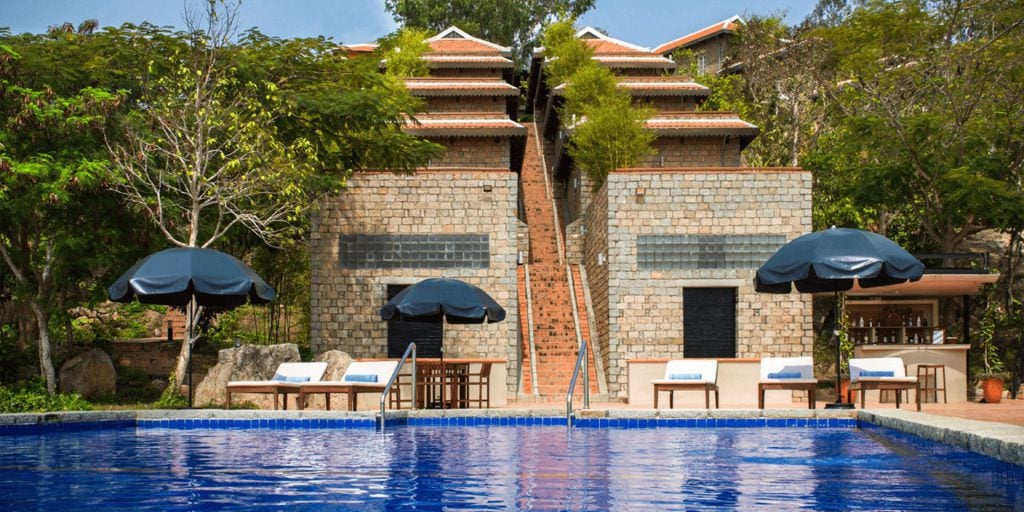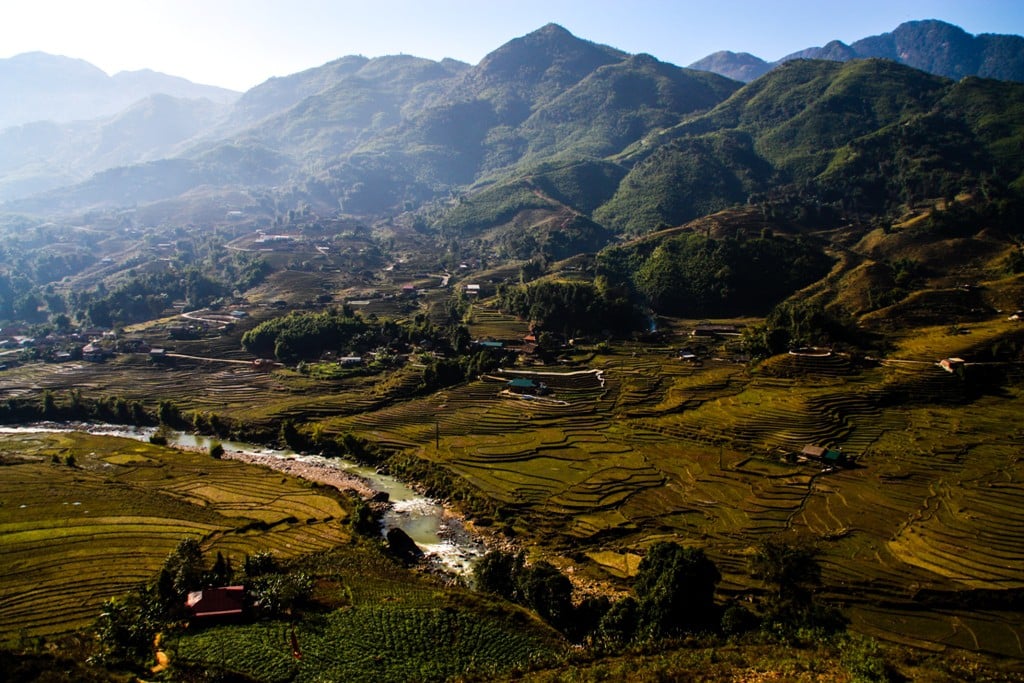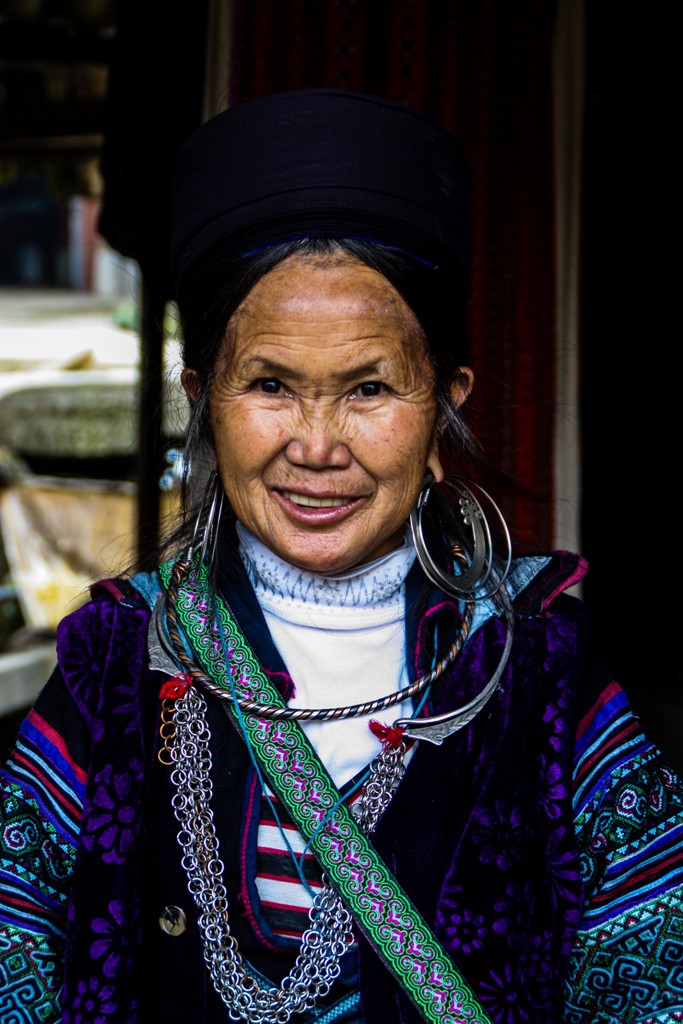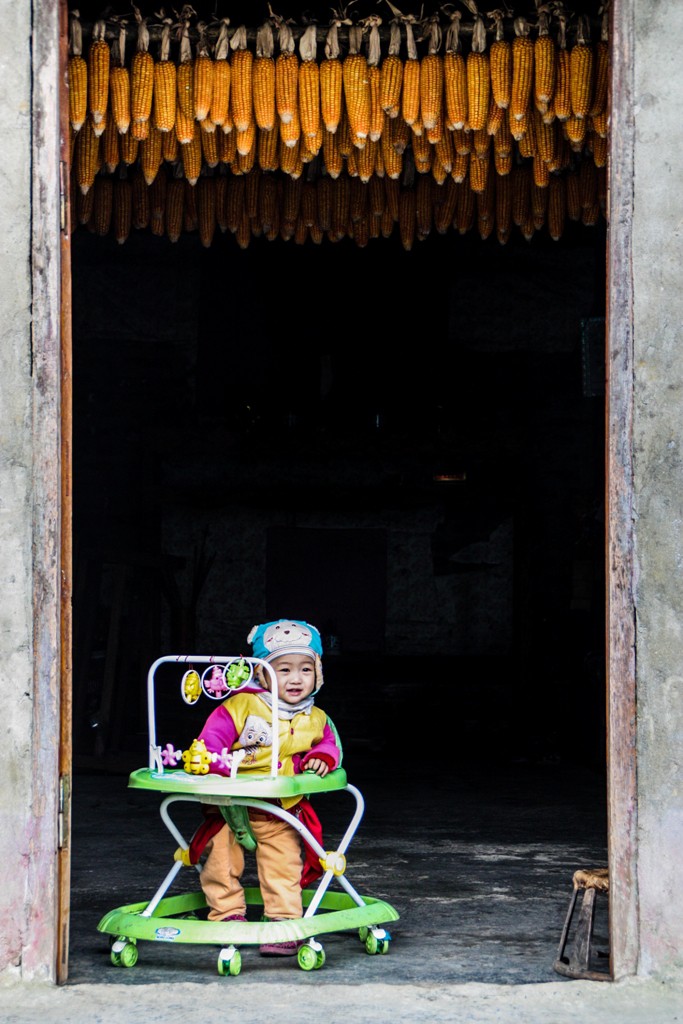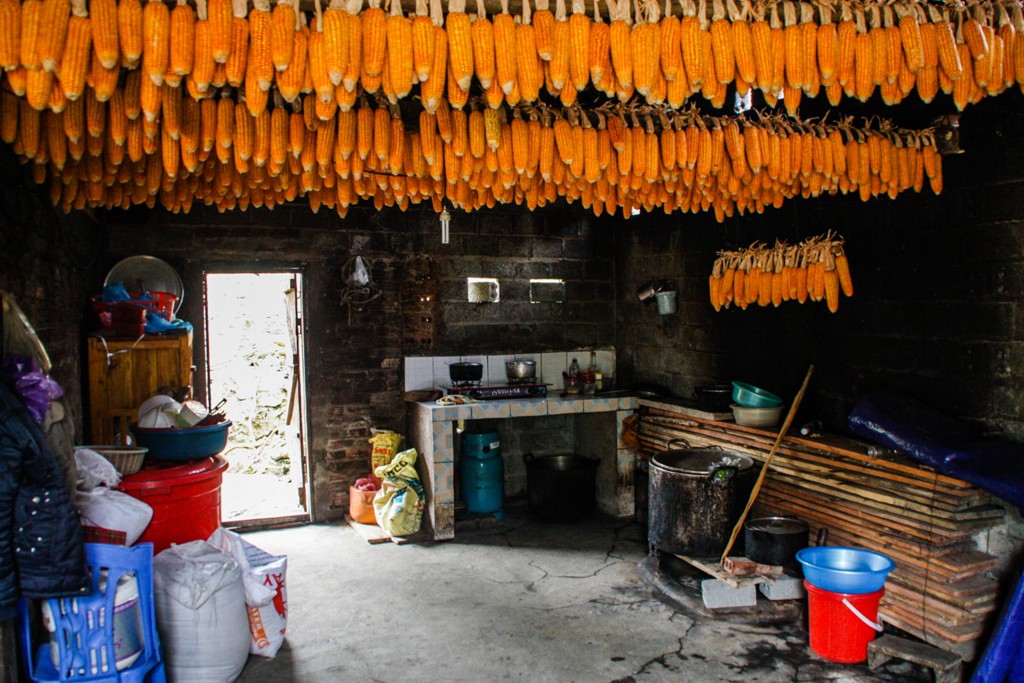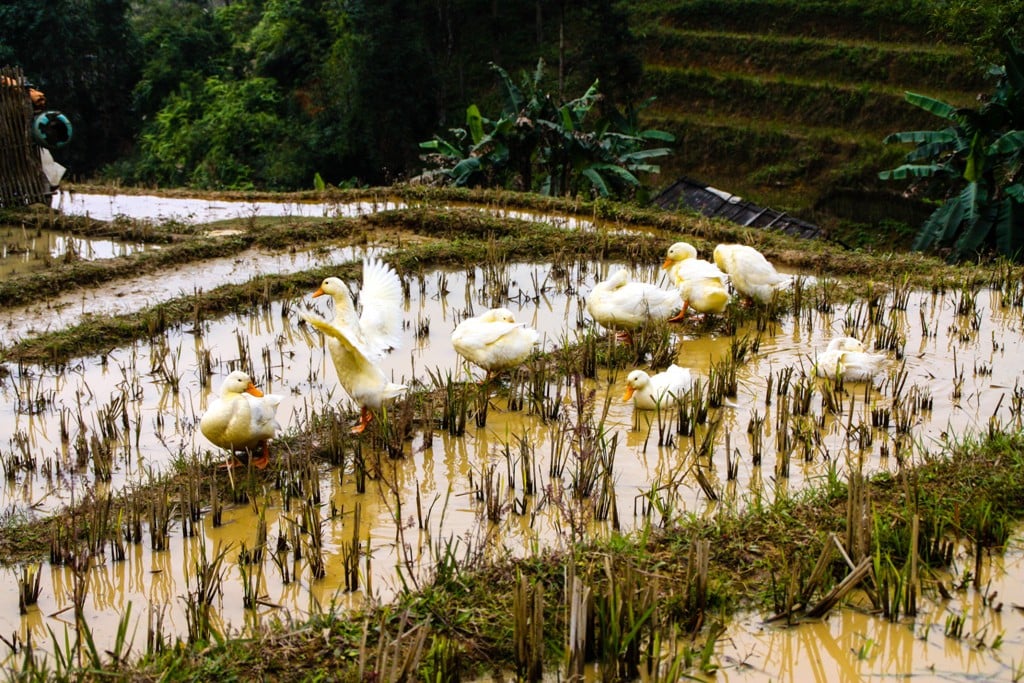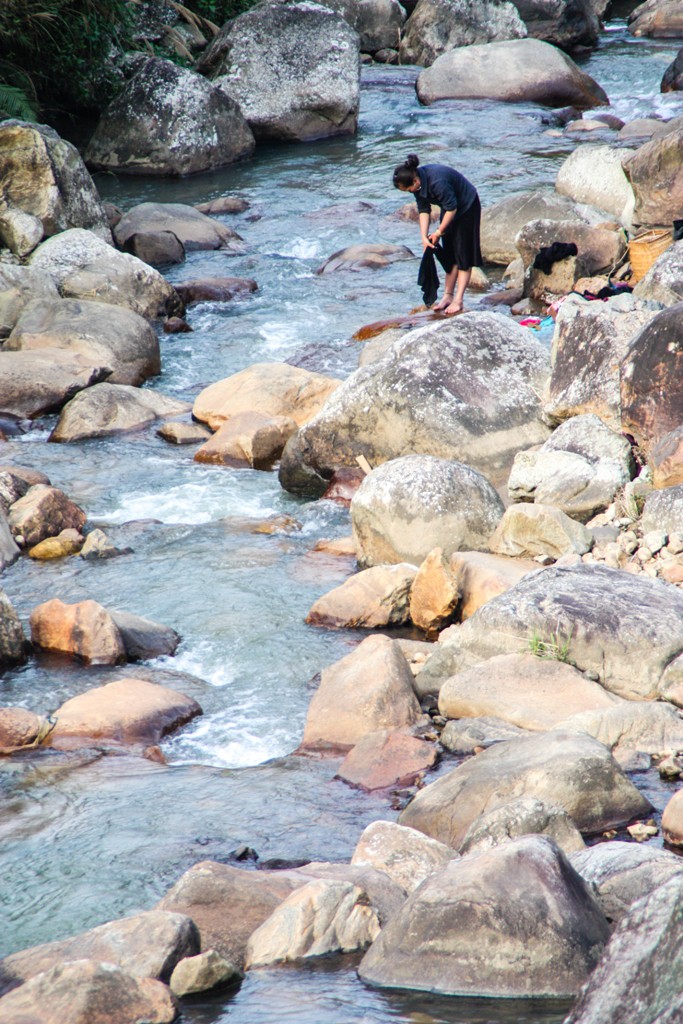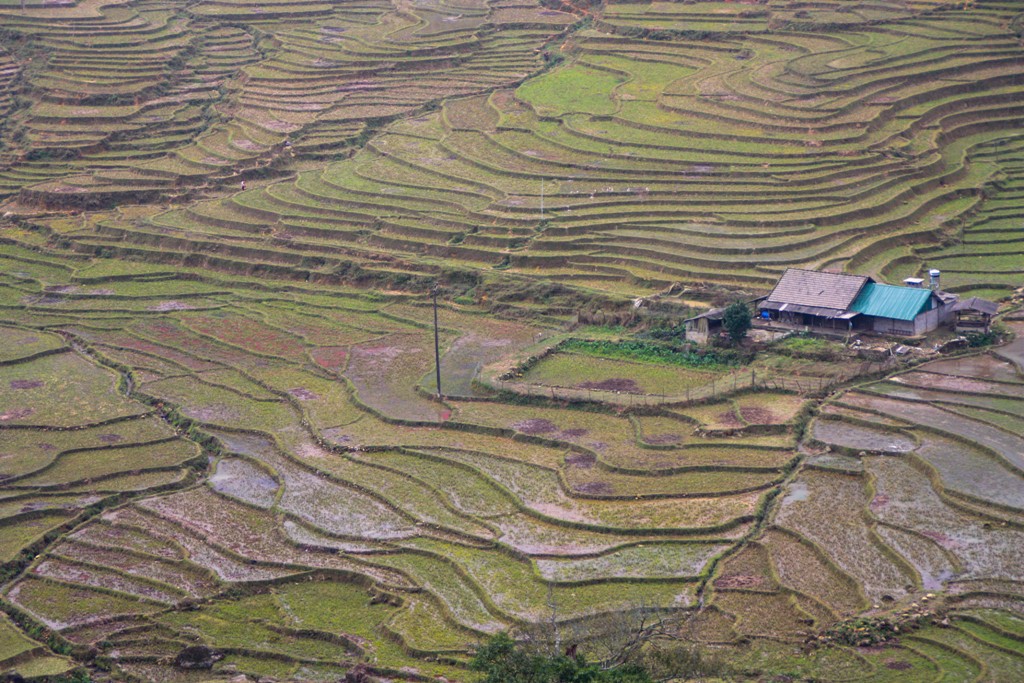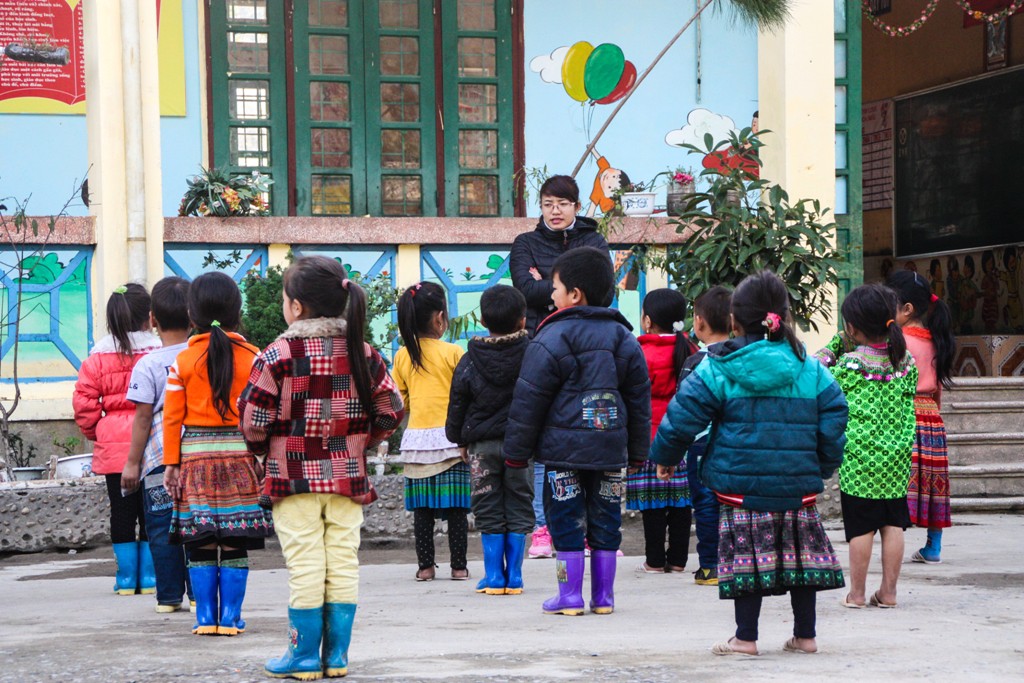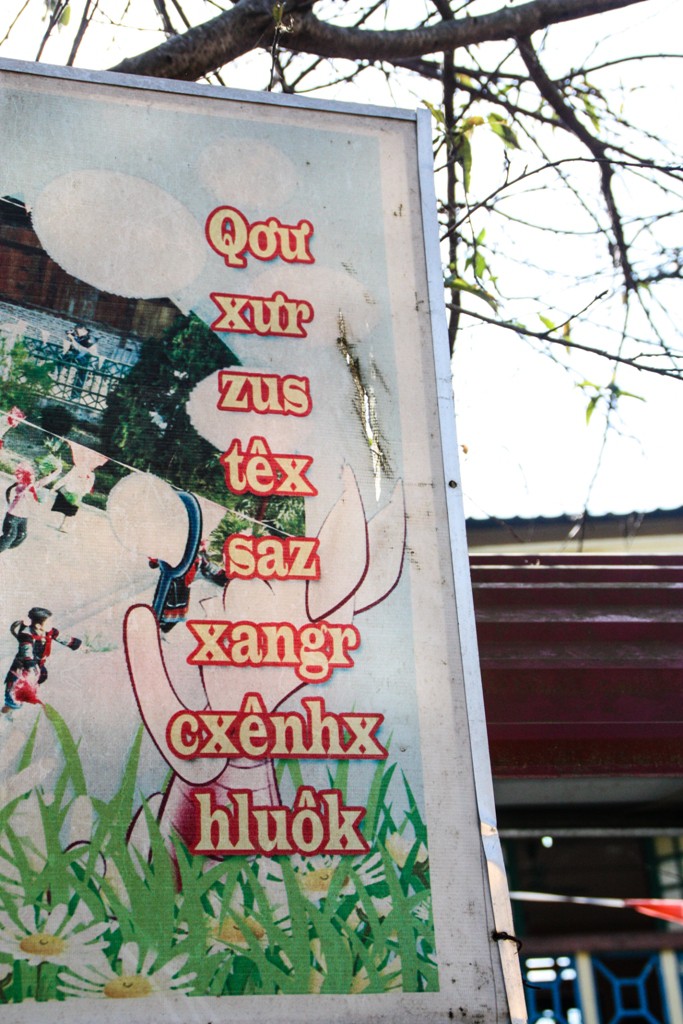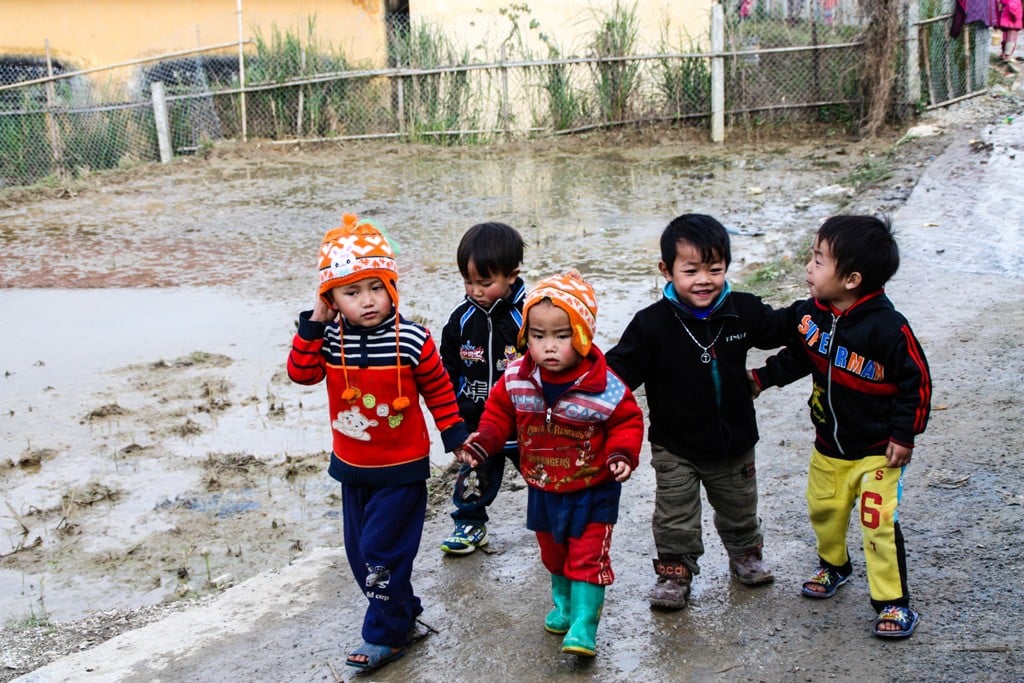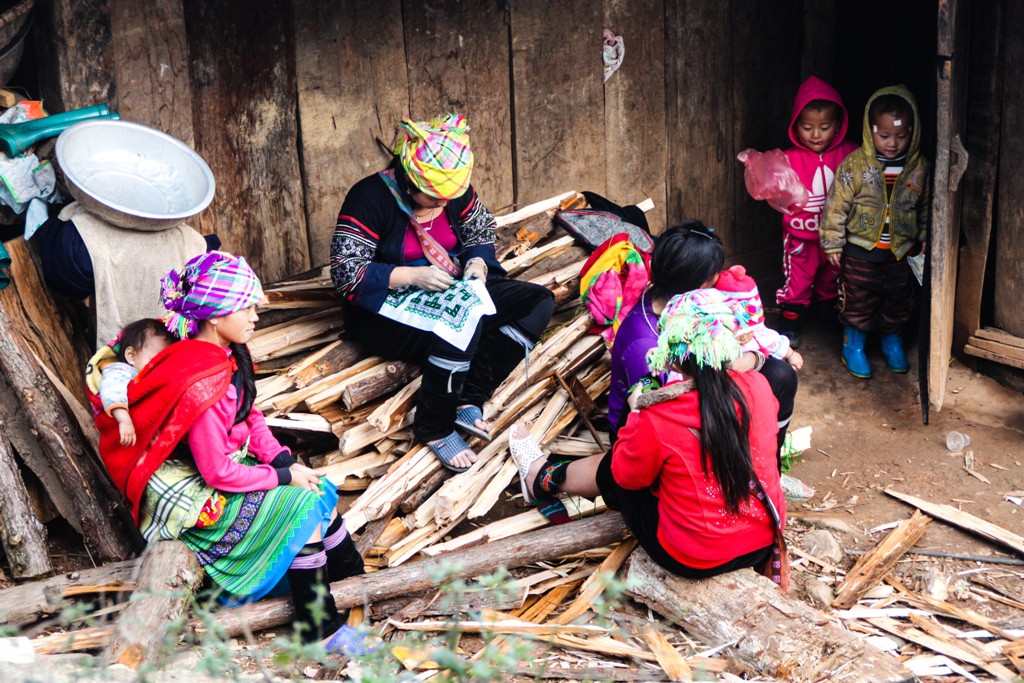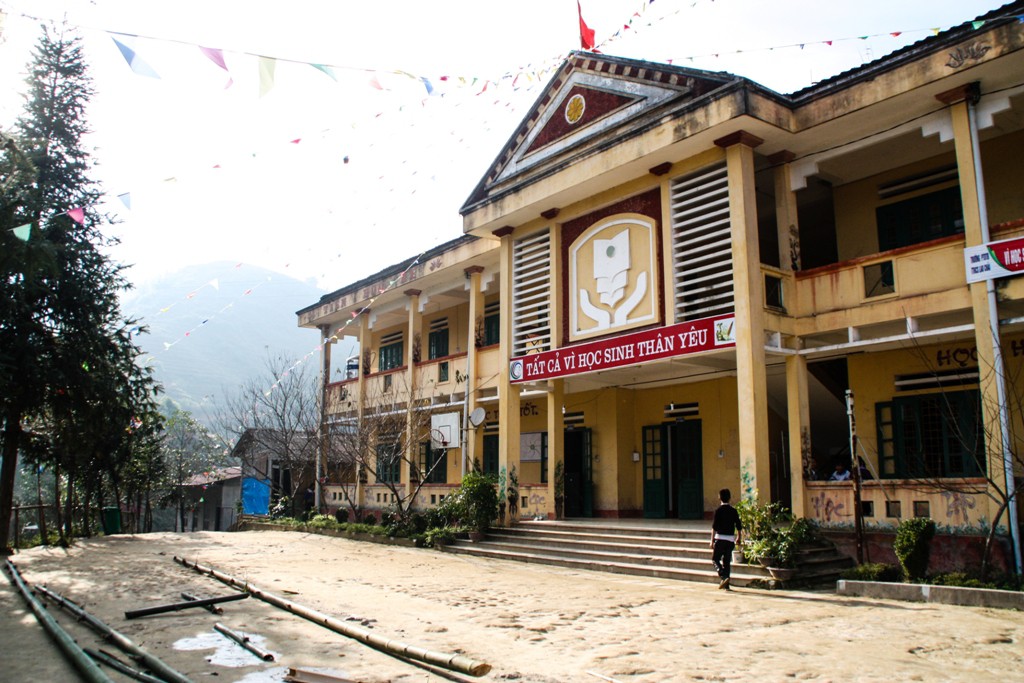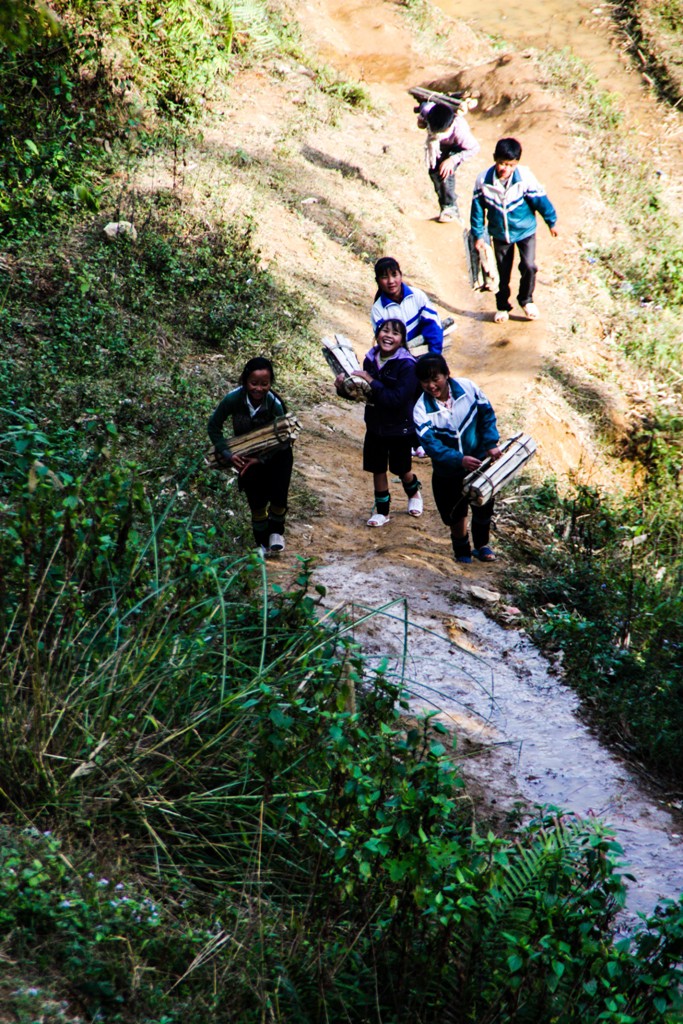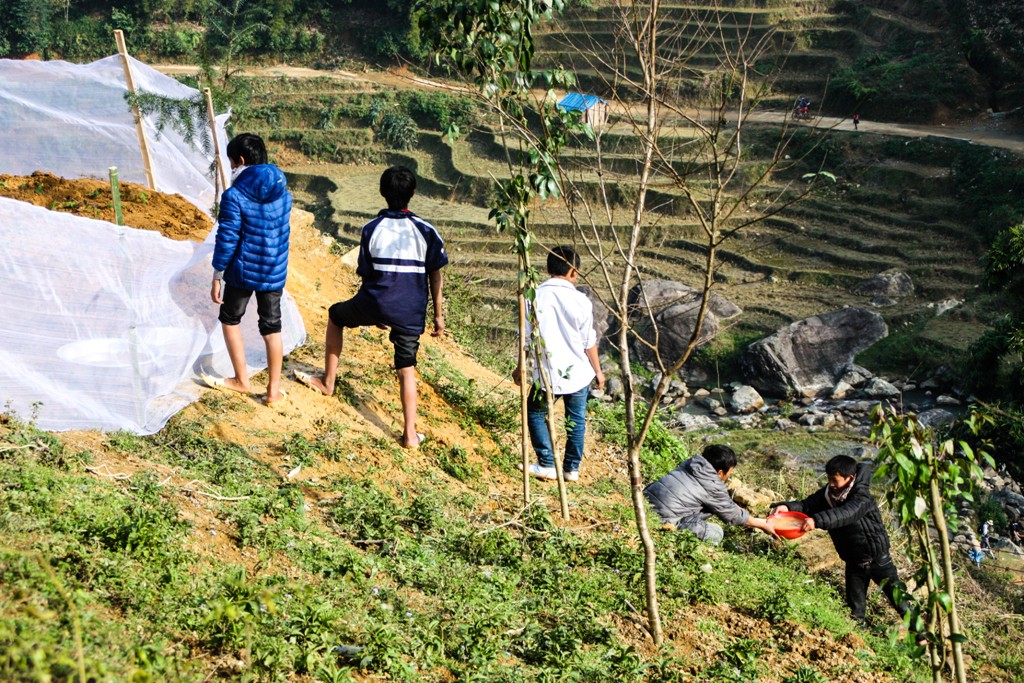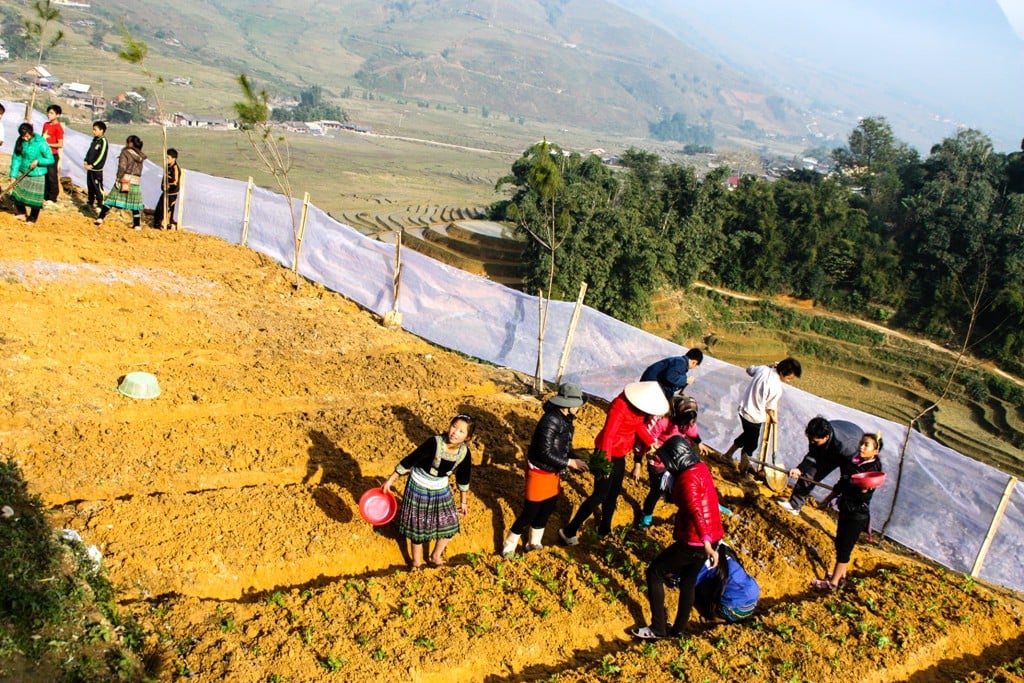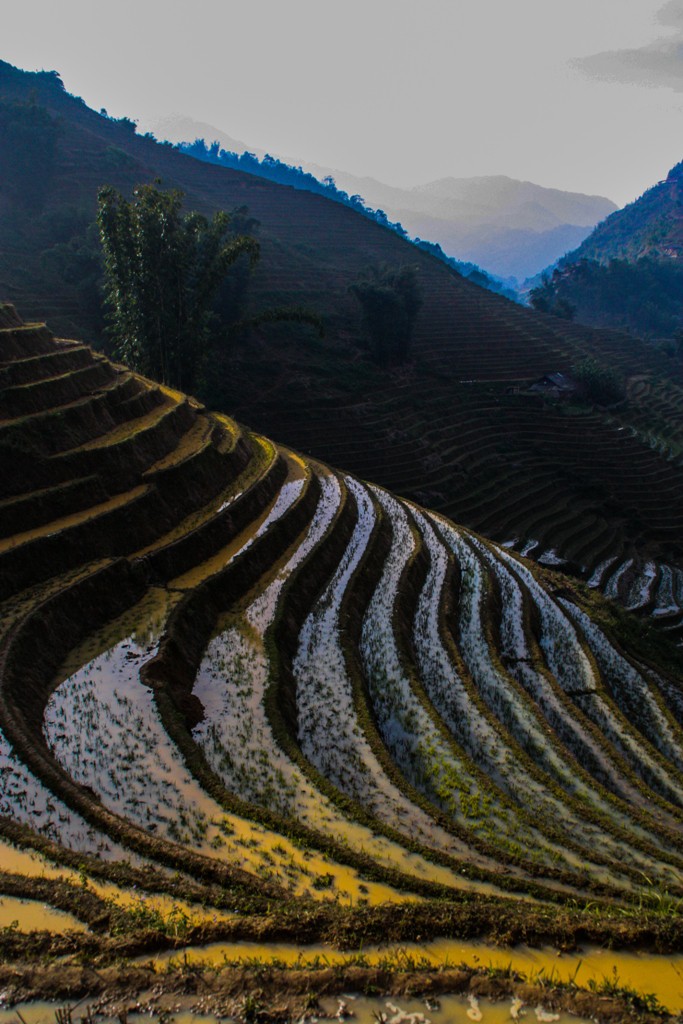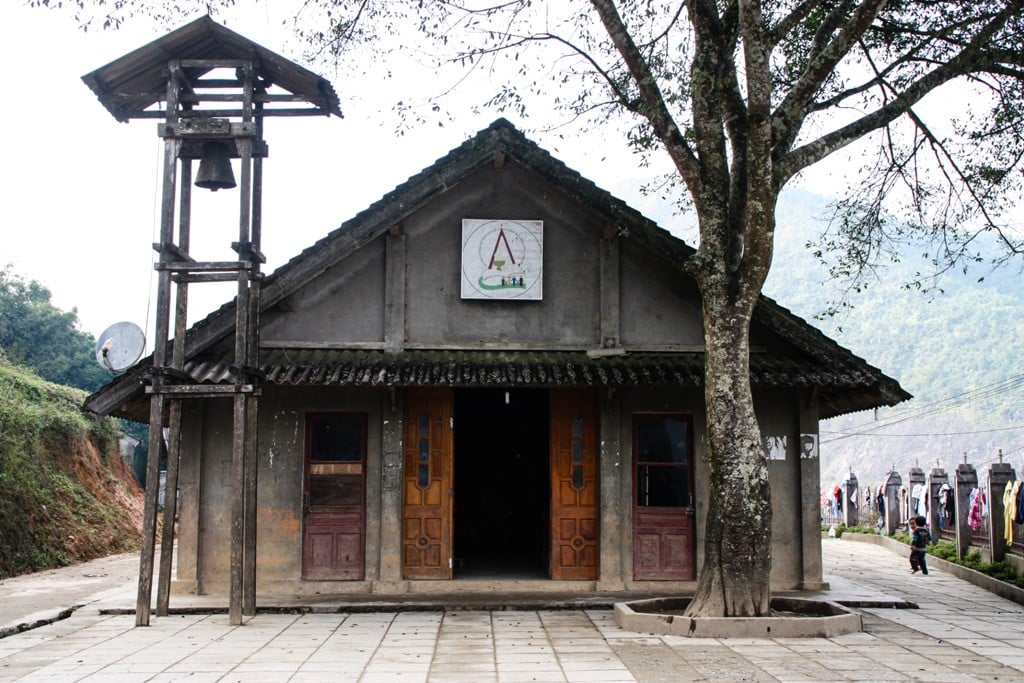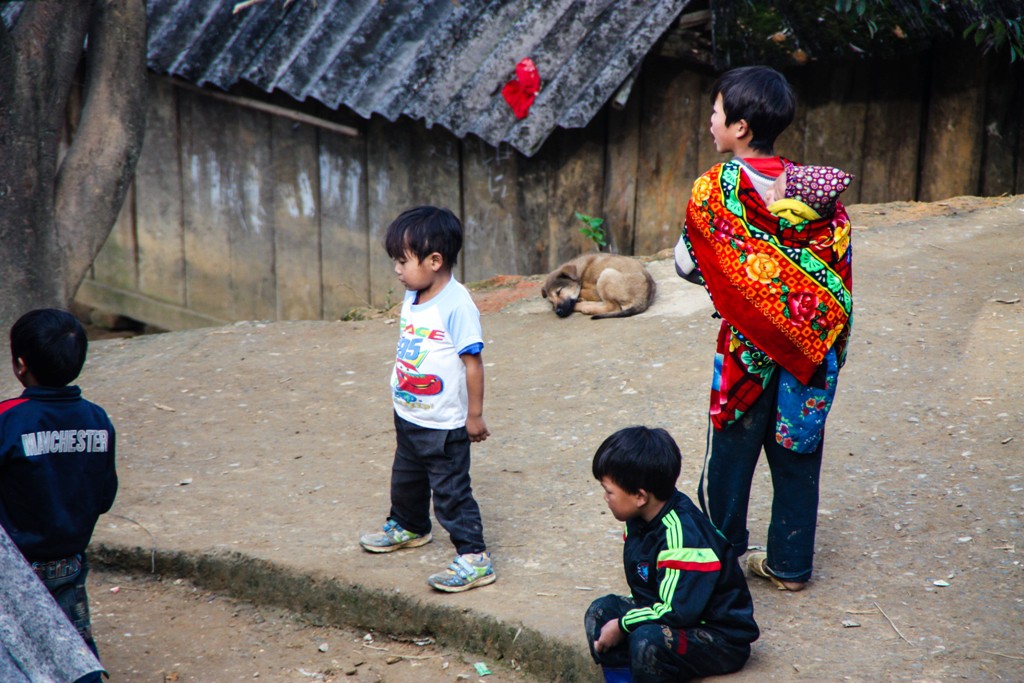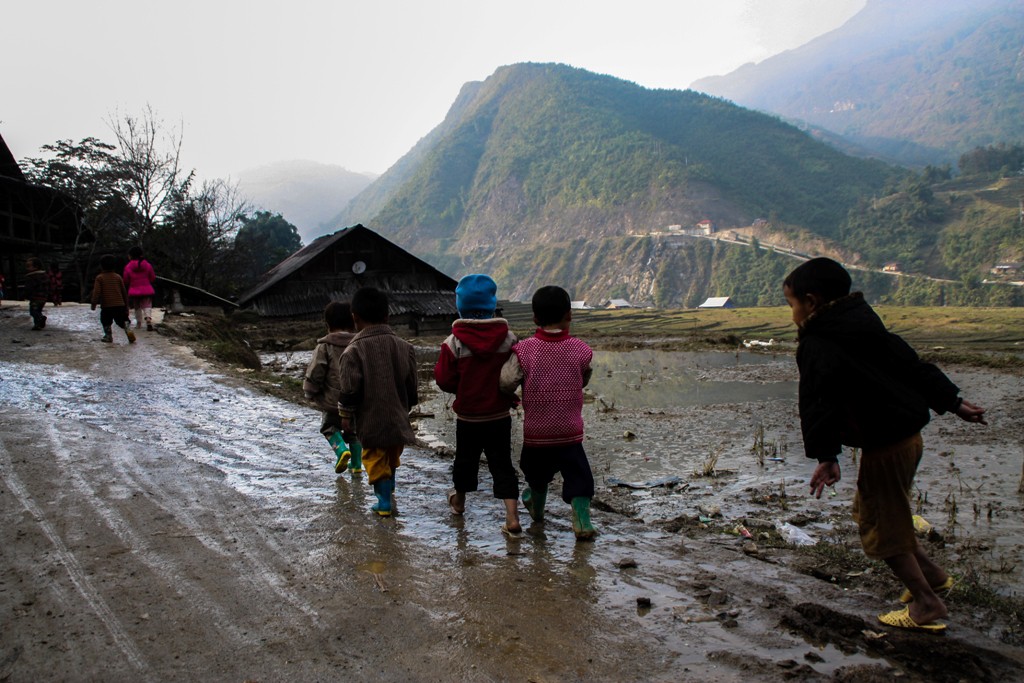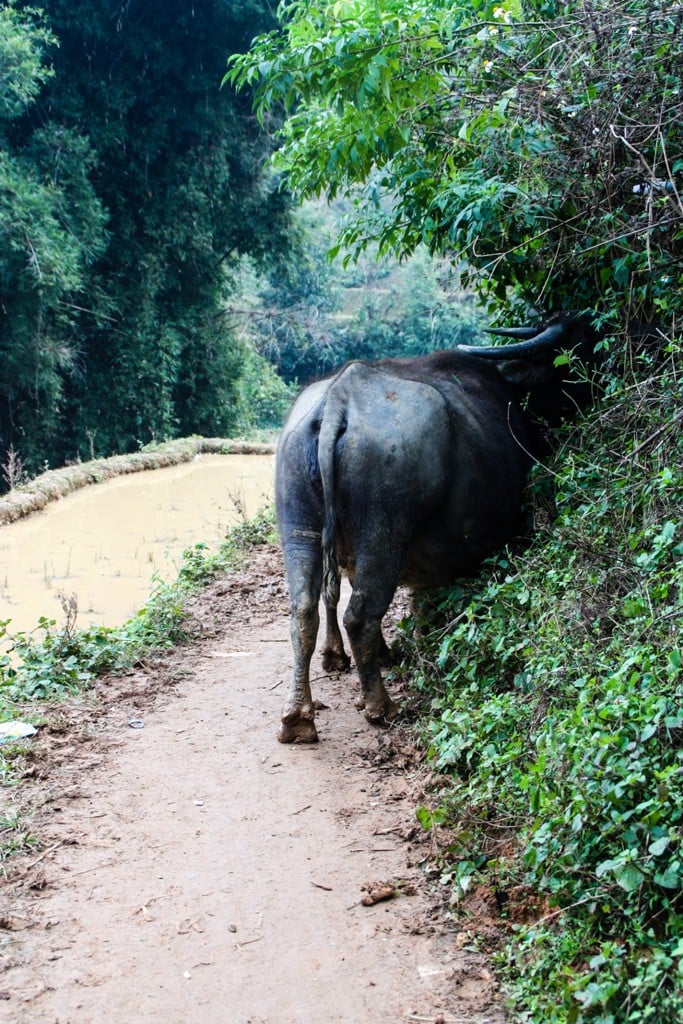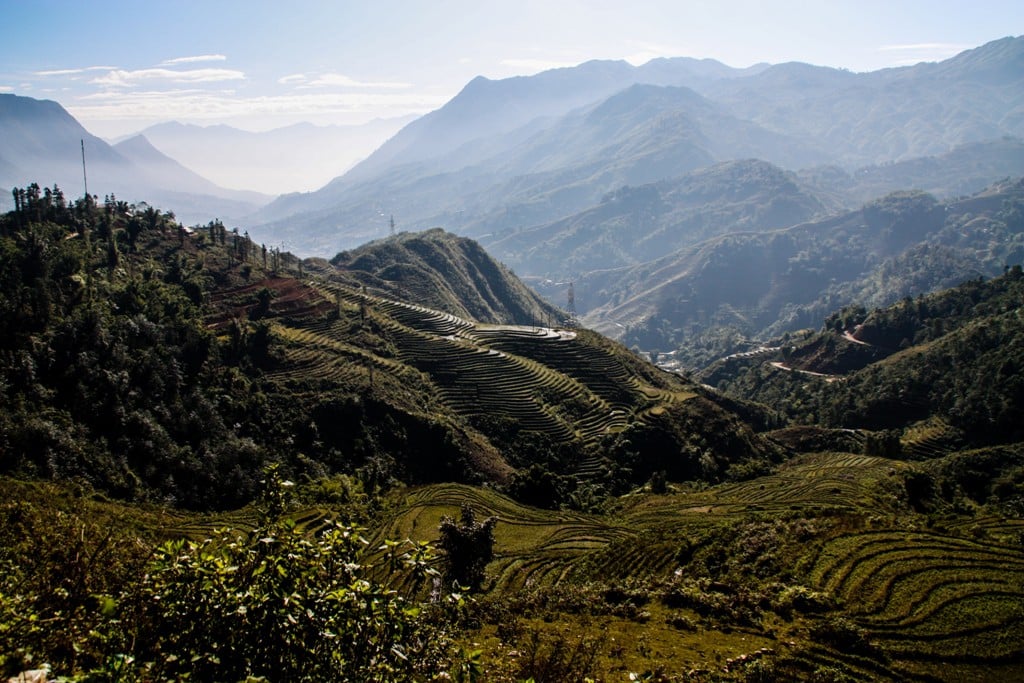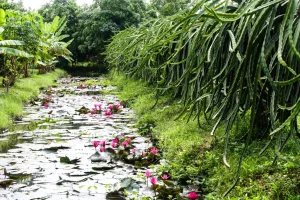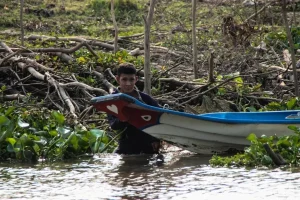Established as a hill station by the French in 1922, the town of Sapa is quaint with boutiques, spas and trendy eateries. But it’s the Muong Hoa Valley between the town and the Tonkinese Alps that’s really why travelers come to the far northwest of Vietnam.
The valley is home to a few ethnic minority groups including the H’mong, Dao and Zay, differentiated by their styles of dress and language.
The friendly villagers are used to tourists and are open to interaction.
Homes are generally very sparse by Western standards. Expect few windows because of the extreme cold in winter. The valley also has fog which in turn gets into blankets and pillows, another reason why houses are designed to be sealed up tight.
Between the main villages, there are wide cemented paths for ease of travel, either by walking or motorbike. There are countless paths off the main path, though. Some are narrow but paved, like the one below. And some are little more than muddy trails. In the morning mist (and during the rainy season), the paths can get very slippery!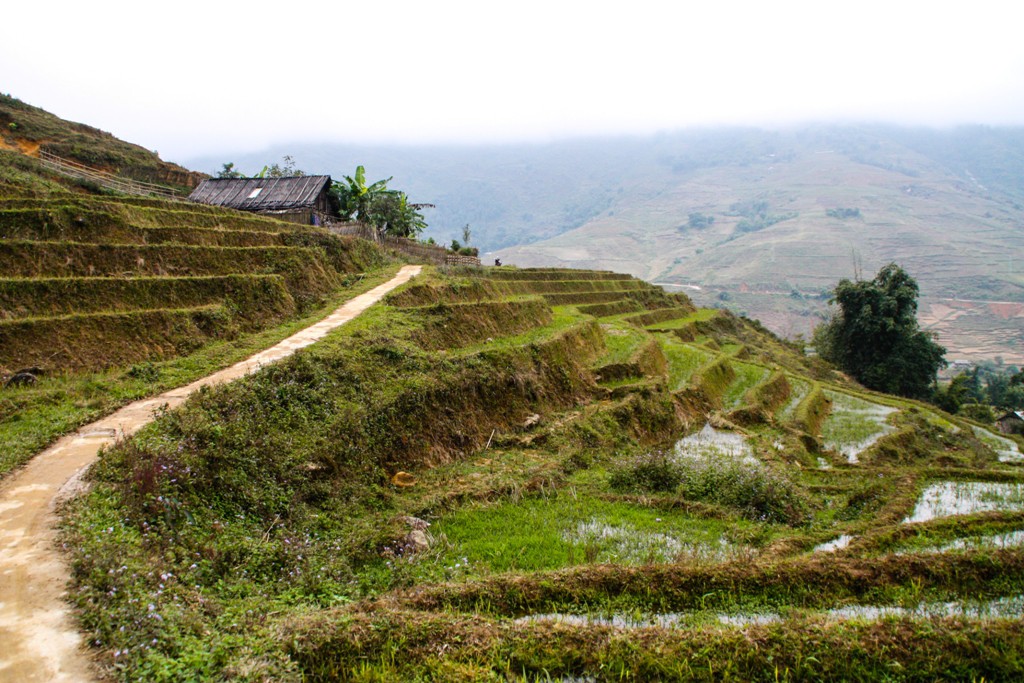
However, getting off the beaten path is a real joy. With ducks for company…
… and passing by scenes that could be from a hundred years ago with villagers harnessing the power of the river for laundry, milling rice and many other things.
Of course, there are also the famous terraced rice fields, overcoming the harsh terrain and the harsh weather, to produce one crop of rice per year (as opposed to two or three crops as in other areas of Vietnam).
On a walk through the villages, you’ll likely come across small schools as well. Here, it’s time for morning exercises, with students all bundled up against a cool day.
Children in the area learn Vietnamese at school, but often speak their own dialects at home.
In the mornings and afternoons, expect to share the trails with groups of children coming and going to school.
While it’s easy to think that the local women only put on traditional dress for tourists, in reality, these colorful garments are their everyday garb. All around the villagers, women can be seen dyeing, sewing and embroidering traditional clothes which they wear when going to market, or just for a visit at a neighbor’s home.
While there are many elementary schools, there are fewer high schools which means that some students must come from far away to continue their education. This school is located on a mountainside in the Muong Hoa Valley and includes a dormitory where students sleep.
Here, everyone pitches in to do chores including bringing firewood up to the school.
Students form a human assembly line to gather water from the stream up to a plot of vegetables.
Children learn from an early age that hard work is needed to survive and that it’s everyone’s responsibility to help out.
The rice planting season begins in May and reaches its peak in September / October when it’s harvested. While these months produce the best photos (when the fields are full and yellow-green at harvest time), the terraces are beautiful any time of year. We took the photos in this post in late-December.
The local minorities are mainly animists (belief in the spirit world and in the interconnectedness of all living things) and you’ll notice little things in the home that speak to their beliefs (for instance, strung across the door frame), but some in the area are also Christian, as this little wooden church shows.
Despite seeing tourists trekking through their villages, it’s amazing how the locals can simply go about their everyday lives without distraction…
…allowing us a glimpse into what it’s like to live in these sometimes harsh conditions…
But amidst the isolation and simplicity, there is a gentle peacefulness to life here. Especially when you get off the main paved roads and climb into the hills, this is what a Sapa traffic jam looks like…
And you’ll be rewarded with scenes of stunning beauty for having made the effort…
Visiting hill tribes:
- Dress modestly even when it’s hot outside.
- If entering a home, remove headwear and your backpack as a sign of respect.
- The living standard amongst the hill tribes is generally low. The best way to help is to employ local guides and support local homestays. Instead of giving gifts or buying from children, ask your guide if you can donate supplies to a school instead.
- Be respectful of religious rituals and iconography.
- Ask permission before taking photographs of people. A smile works wonders.
Wearing sturdy shoes is recommended. Some may also find walking sticks helpful (widely available in shops in Sapa town) as the paths can be very slippery / muddy.
